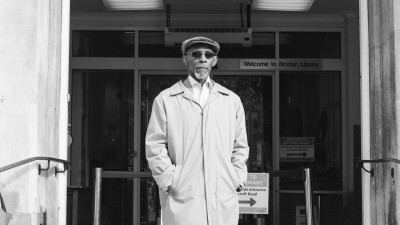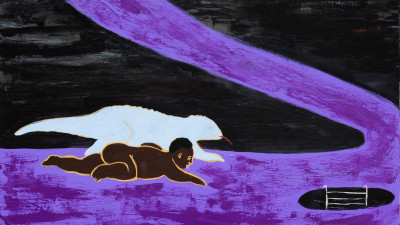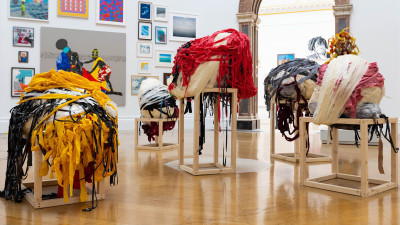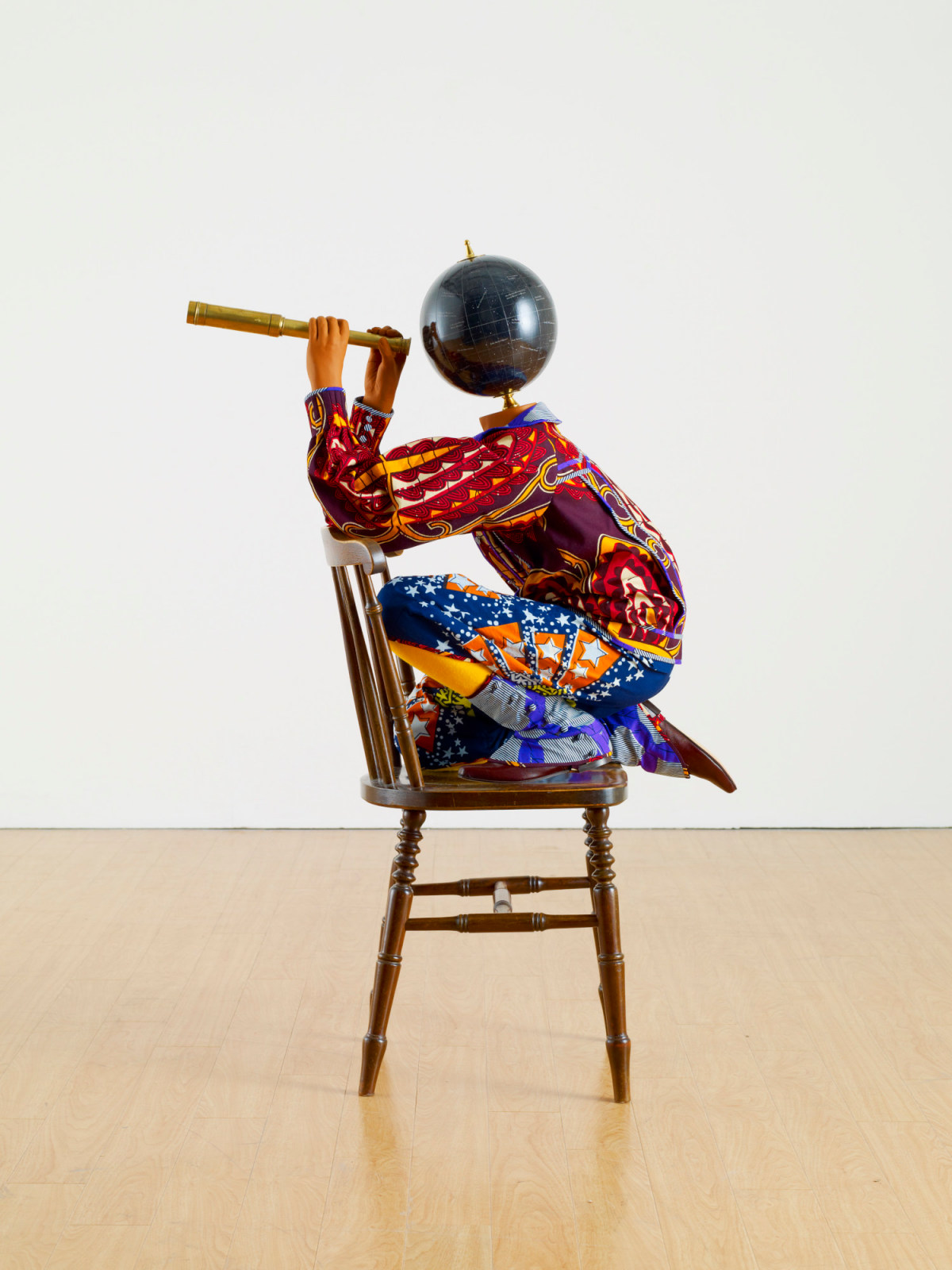
Yinka Shonibare RA, Cheeky Little Astronomer, 2013.
Fibre glass life-sized mannequin, dutch wax printed cotton textile, leather, resin, chair, globe and telescope. 1230 mm x 470 mm x 900 mm. © Royal Academy of Arts. © Photo: Royal Academy of Arts, London. Photographer: Steve White.
This image is not available to download. To licence this image for commercial purposes, contact our Picture Library at picturelibrary@royalacademy.org.uk
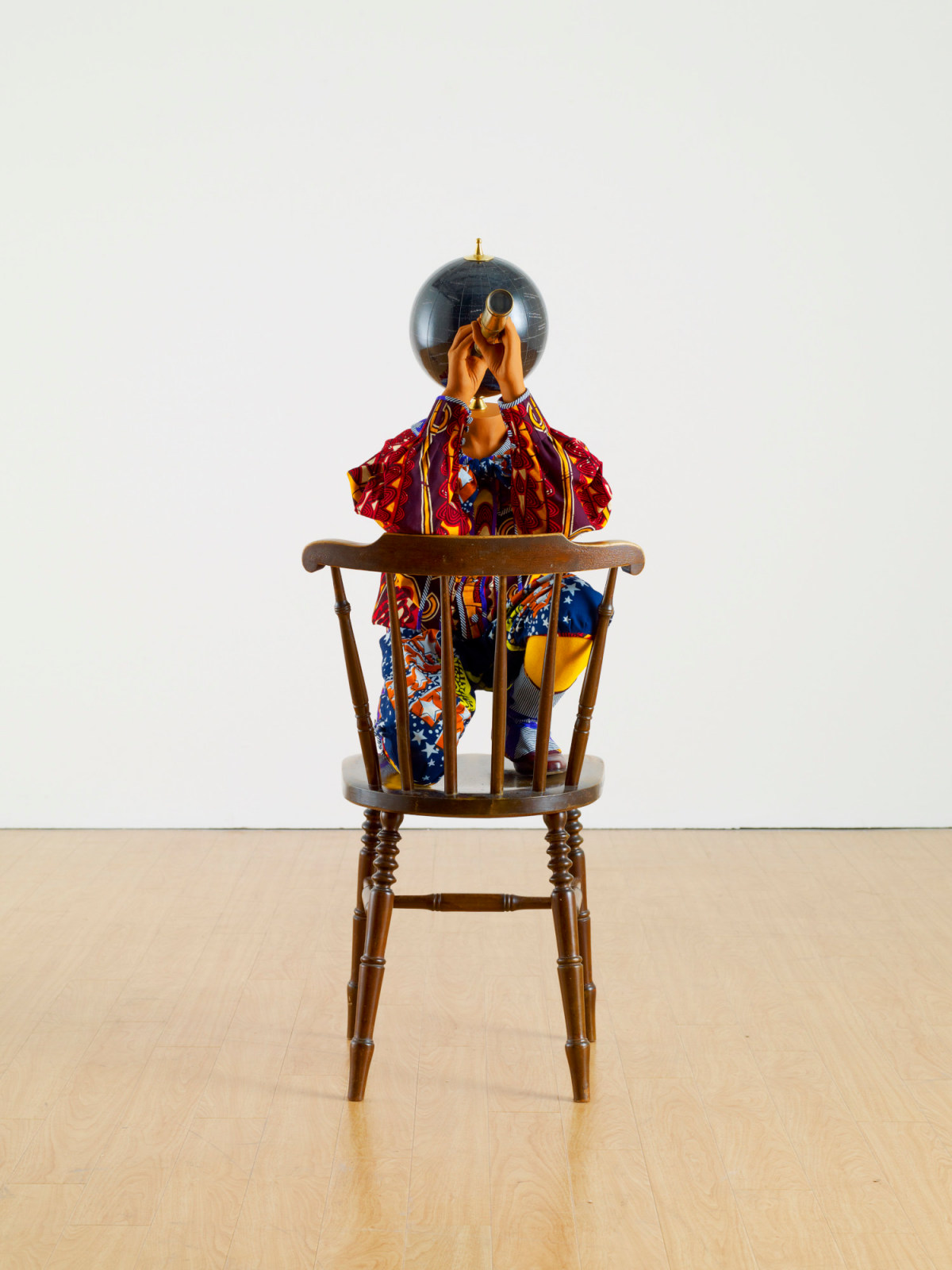
Yinka Shonibare RA, Cheeky Little Astronomer, 2013.
Fibre glass life-sized mannequin, dutch wax printed cotton textile, leather, resin, chair, globe and telescope. 1230 mm x 470 mm x 900 mm. © Photo: Royal Academy of Arts, London. Photographer: Steve White.
This image is not available to download. To licence this image for commercial purposes, contact our Picture Library at picturelibrary@royalacademy.org.uk
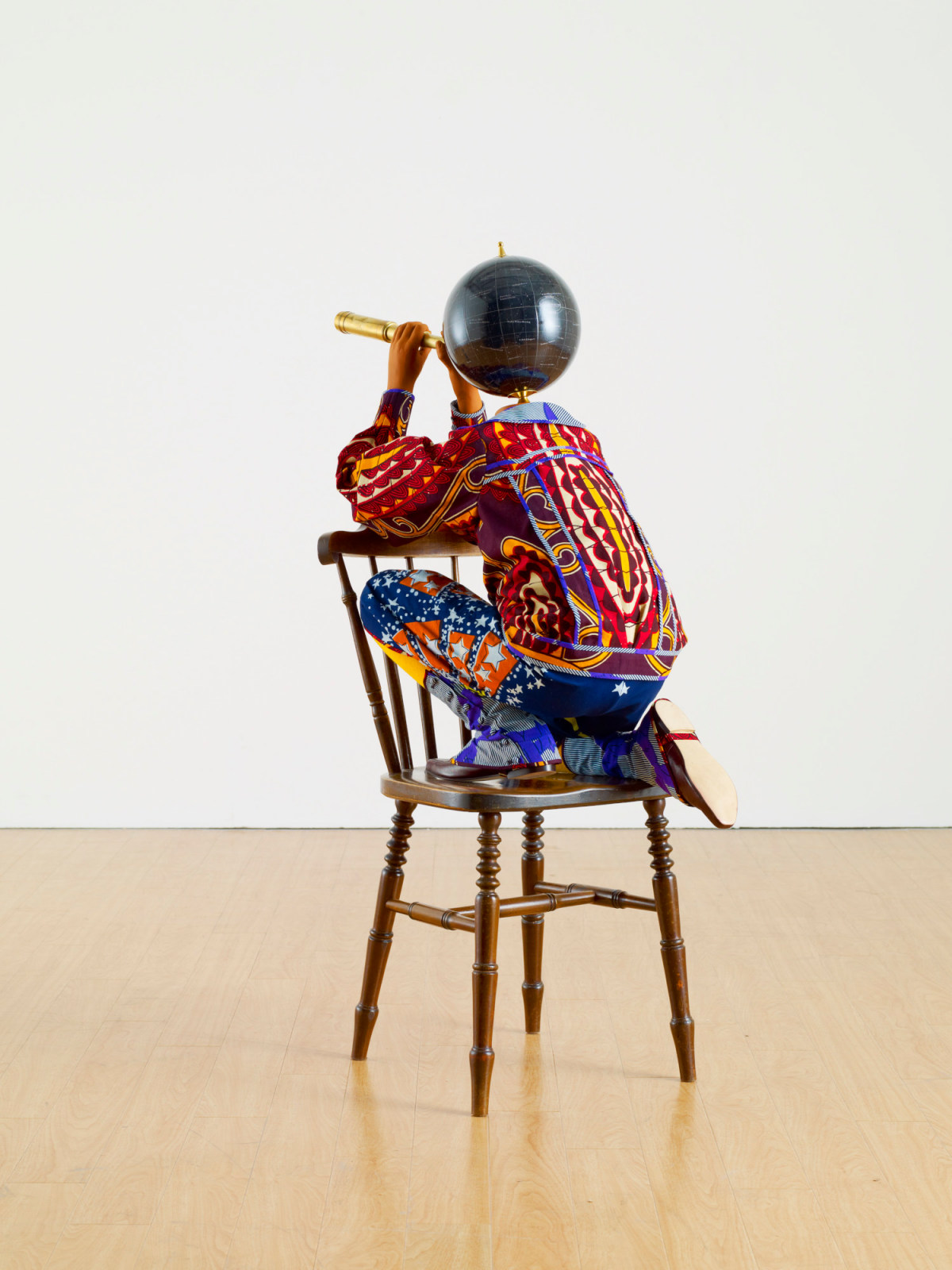
Yinka Shonibare RA, Cheeky Little Astronomer, 2013.
Fibre glass life-sized mannequin, dutch wax printed cotton textile, leather, resin, chair, globe and telescope. 1230 mm x 470 mm x 900 mm. © Photo: Royal Academy of Arts, London. Photographer: Steve White.
This image is not available to download. To licence this image for commercial purposes, contact our Picture Library at picturelibrary@royalacademy.org.uk
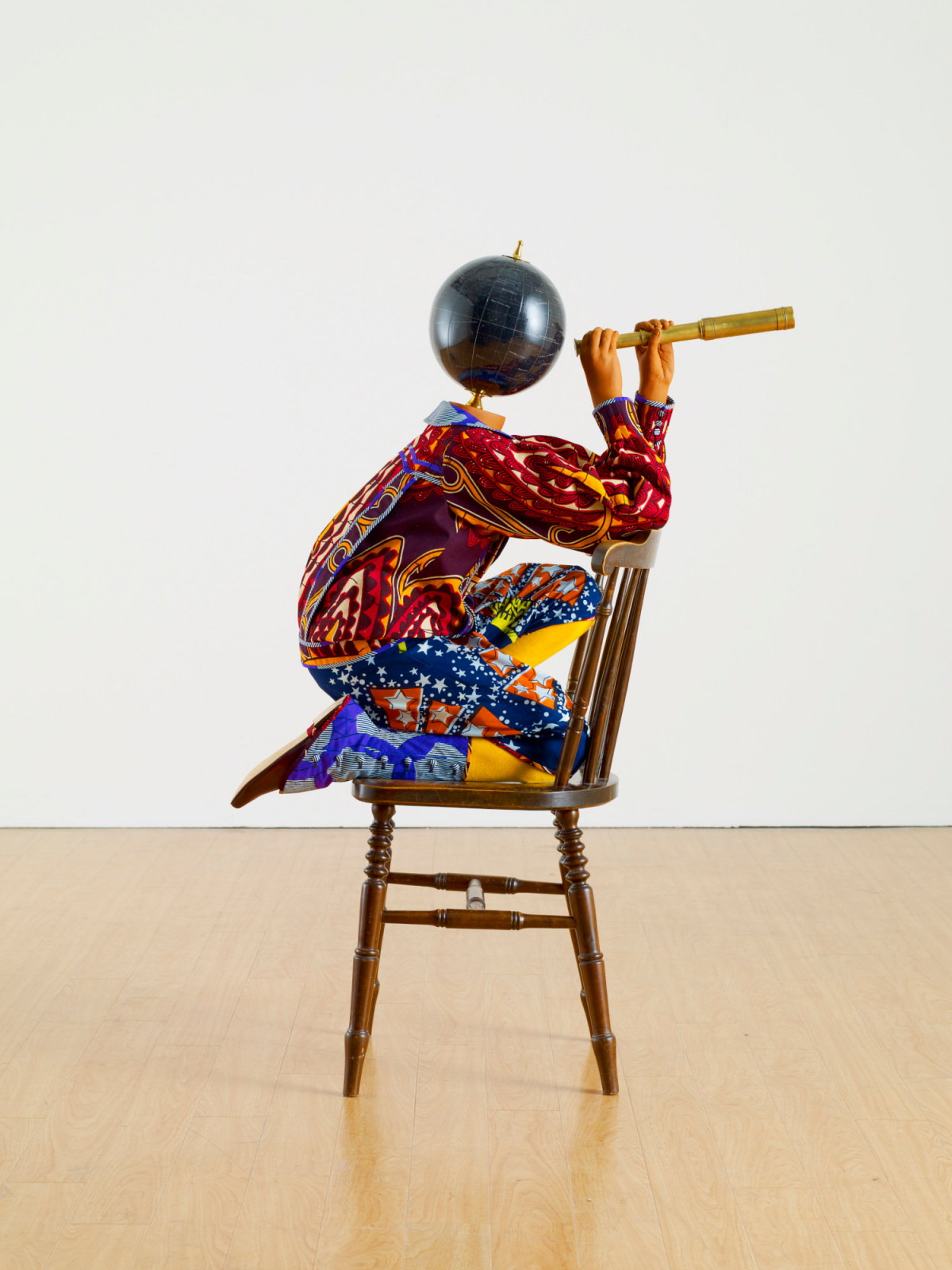
Yinka Shonibare RA, Cheeky Little Astronomer, 2013.
Fibre glass life-sized mannequin, dutch wax printed cotton textile, leather, resin, chair, globe and telescope. 1230 mm x 470 mm x 900 mm. © Photo: Royal Academy of Arts, London. Photographer: Steve White.
This image is not available to download. To licence this image for commercial purposes, contact our Picture Library at picturelibrary@royalacademy.org.uk
Cheeky Little Astronomer, 2013
Yinka Shonibare RA (b. 1962)
RA Collection: Art
Interested in multiculturalism, Shonibare combines different references in this playful sculpture. The figure is reminiscent of western classicism whereas the globe head represents cultural exchange. The patterned, batik fabric has come to symbolise Africa but it is traditionally made in Indonesia, produced in Holland and sold in West Africa. The Victorian style of clothes, chair and globe act as reminders of British colonial history.
Cheeky Little Astronomer was commissioned for an exhibition at the Astronomer Royal's apartments in Flamsteed House, part of the Royal Observatory Greenwich. The house was built in 1675 for the Astronomer Royal and his family, a post established by King Charles II to instruct the monarch on astronomy. The figure was placed facing the window as if observing the atmosphere with his telescope. The equipment points to the important science that took place in the house and the child-like figure to the family activity lived alongside the astronomical instruments. Shonibare describes the sculpture as aspirational: “The work also evokes magic. Looking into the stars, there’s something aspirational, forward-looking and magical about the piece”.
Shonibare has made a number of works with figures with globes for heads. The figures at times reflect the standing poses of classical sculpture and elsewhere are captured in action: precariously balancing books, suspended on stilts, or toppling off a chair. Shonibare explains that he creates this juxtaposition because classical sculpture is iconic in Western high culture whereas the globe is universal and therefore more inclusive. The globe symbolises Shonibare's concerns with geographical and cultural identity and colonialism and post-colonialism. The Victorian style of the globe refers to a colonial period.
The clothes the figure wears are made from batik fabric, with brightly coloured patterns created from dying the fabric with a wax-resist. Many of the patterns have symbolic meaning so in some cultures the fabric could be 'read'. The fabric is traditionally made in Indonesia, produced in Holland and sold in West Africa, where it has become a symbol of the culture. Shonibare uses the fabric as he is interested in how something that symbolises one culture can have a hidden, multicultural history. This represents his belief that cultural identity is enriched when hybrid. He explores the relationship between Africa and Europe and the boundaries between the two.
The chair the child crouches on symbolises the domestic setting of the Astronomer Royal's apartments, where the family's daily life took place alongside astronomical equipment. The child has clambered onto the chair to enable him to gaze into the sky. The chair grounds the sculpture, providing a contrast with the limitless space that is suggested by the telescope. Imagination and the immaterial are paired with the practicalities of daily life.
The figure is made of fibreglass and the costume from fabrics, the globe was made by Bellerby globe makers and the telephone and chair were found items.
Quote from unpublished interview with Yinka Shonibare 2017.
Object details
1230 mm x 470 mm x 900 mm
Start exploring the RA Collection
- Explore art works, paint-smeared palettes, scribbled letters and more...
- Artists and architects have run the RA for 250 years.
Our Collection is a record of them.
